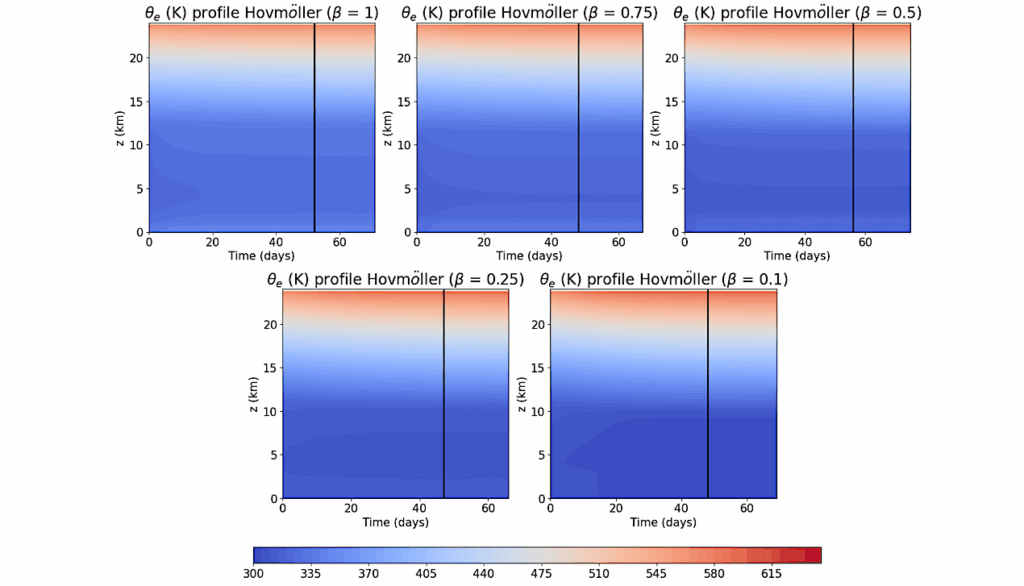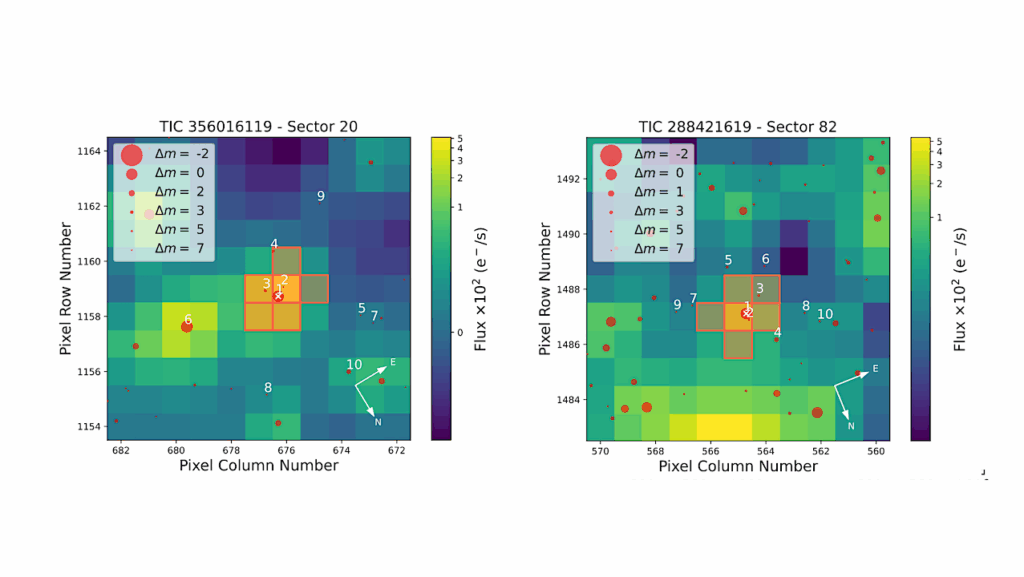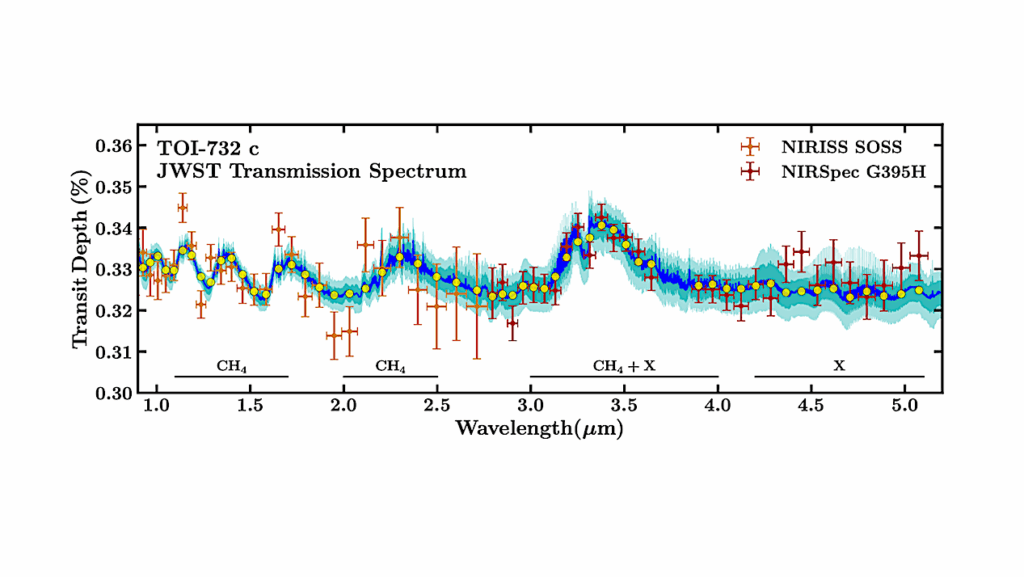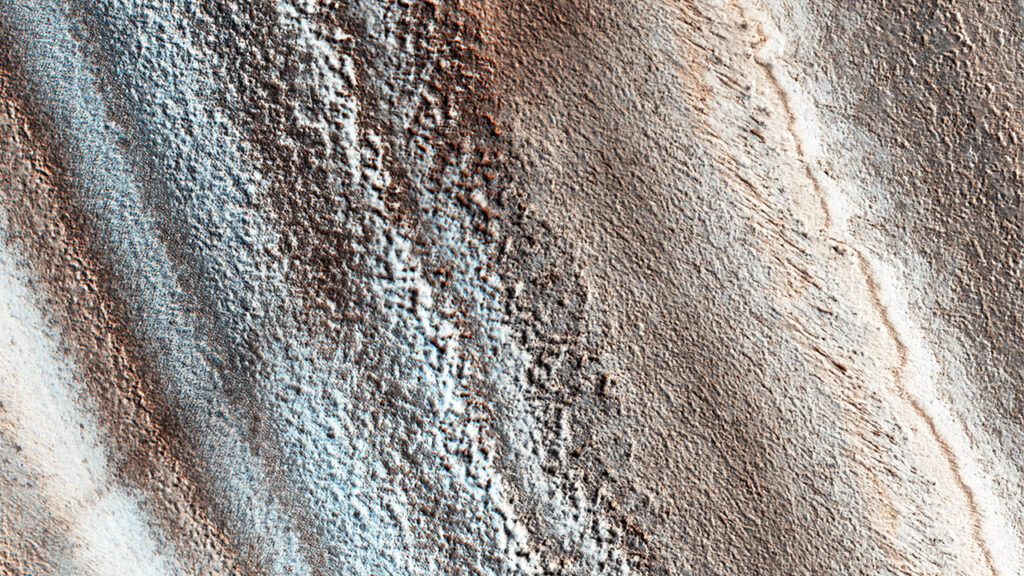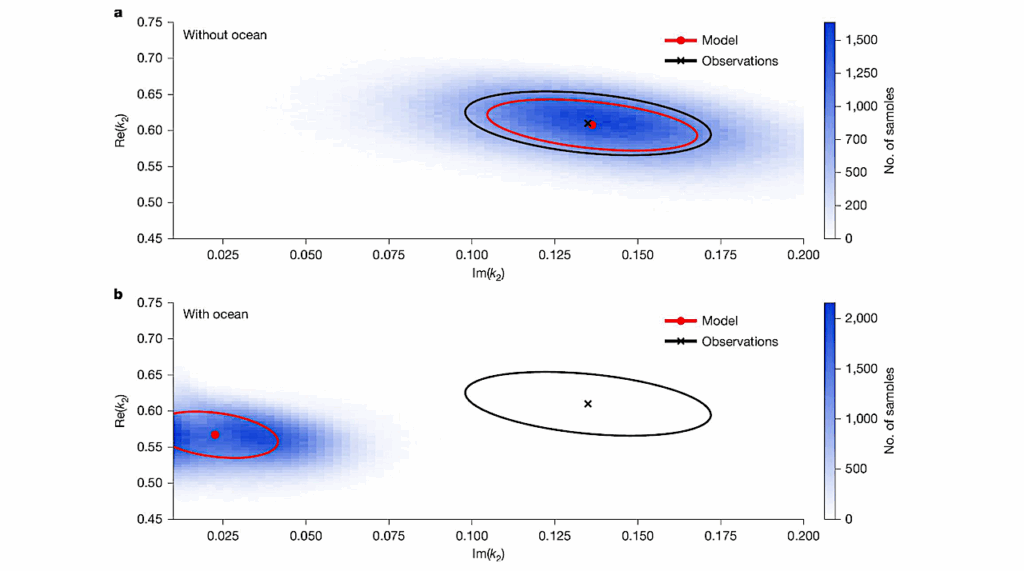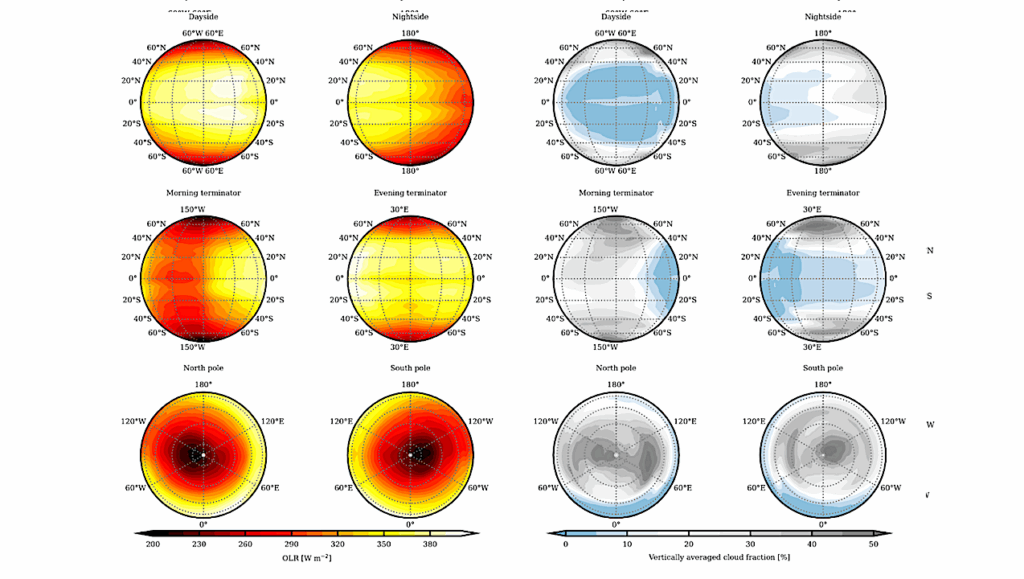Warm, Water-depleted Rocky Exoplanets With Surface Ionic Liquids: A Proposed Class For Planetary Habitability

The discovery of thousands of exoplanets and the emergence of telescopes capable of exoplanet atmospheric characterization have intensified the search for habitable worlds.
Due to selection biases, many exoplanets under study are planets deemed inhospitable because their surfaces are too warm to support liquid water. We propose that such planets could still support life through ionic liquids: Liquid salts with negligible vapor pressure that can persist on warm planets with thin atmospheres, where liquid water cannot. Ionic liquids have not previously been considered as naturally occurring substances, and thus have not been discussed in planetary science.

Ionic liquids. A) schematic of an ionic liquid composed of a hydrogen sulfate anion and a glycine cation. B) Vials of selected ionic liquids composed of N-containing organics and hydrogen sulfate anions, compounds as labeled in the image. Ionic liquids are typically transparent, with a range of chemical characteristics including colors and viscosities. The ionic liquids were generated by evaporating excess sulfuric acid from mixtures of various organic compounds and concentrated sulfuric acid. See Methods and SI for details. — astro-ph.EP
We demonstrate in laboratory experiments that ionic liquids can form from planetary materials: Sulfuric acid combined with nitrogen-containing organic molecules. Sulfuric acid can be volcanic in origin, and organic compounds are commonly found on planetary bodies.
The required planetary surface is water-depleted and must support sulfuric acid transiently in liquid phase to dissolve organics, followed by evaporation of excess liquid, conditions spanning approximately 300 K at 10^-7 atm to 350-470 K at 0.01 atm. Because ionic liquids have extremely low vapor pressures, they are not prone to evaporation, allowing small droplets or pools to persist without ocean-like reservoirs.
Ionic liquids’ minuscule vapor pressure at room temperature suggests possible stability on planets with negligible atmospheres, shielded by magnetic fields or rock crevices against harsh cosmic radiation. Ionic liquids can stably dissolve enzymes and other biomolecules, enabling biocatalysis and offering a plausible solvent for life, broadening the definition of habitable worlds.
Rachana Agrawal, Sara Seager, Iaroslav Iakubivskyi, Weston P. Buchanan, Ana Glidden, Maxwell D. Seager, William Bains, Jingcheng Huang, Janusz J. Petkowski
Comments: Published in PNAS
Subjects: Earth and Planetary Astrophysics (astro-ph.EP); Chemical Physics (physics.chem-ph)
Cite as: arXiv:2508.08437 [astro-ph.EP] (or arXiv:2508.08437v1 [astro-ph.EP] for this version)
https://doi.org/10.48550/arXiv.2508.08437
Focus to learn more
Related DOI:
https://doi.org/10.1073/pnas.2425520122
Focus to learn more
Submission history
From: Janusz Petkowski
[v1] Mon, 11 Aug 2025 19:53:54 UTC (3,934 KB)
https://arxiv.org/abs/2508.08437
Astrobiology,


